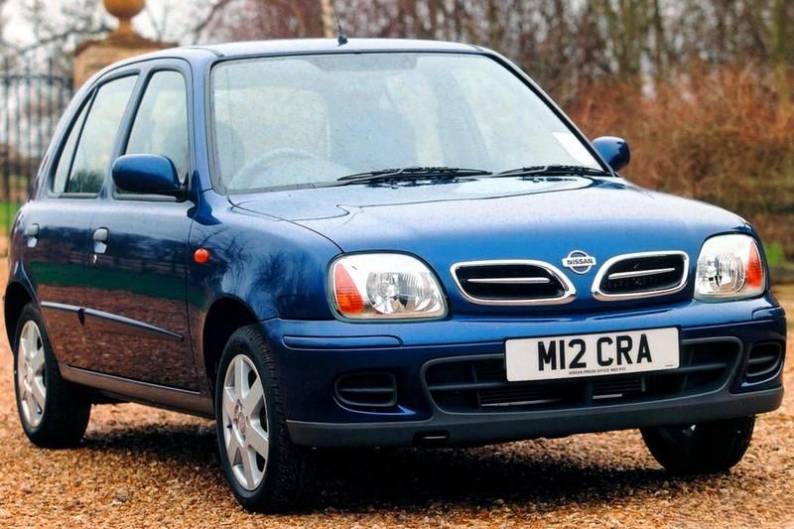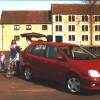
RAC sale – up to 33% off*
• Roadside cover from £5.29 a month†
• We get to most breakdowns in 60 mins or less
• Our patrols fix 4/5 breakdowns on the spot

BY JONATHAN CROUCH
Introduction
This is one of the best little shopping cars on the market and the good news is that it's now one of the best value used cars you can buy. Seen by some as the 1990s version of the Mini, the second generation Micra has achieved a great deal in its young life.
True, the first generation model (which lasted for 10 years) was unexciting and appealed mainly to driving schools and elderly lady drivers. It was however, reliable and well built. Those comments apply also to the second generation post-1993 'Noddy Car' model, voted Car of the Year in 1993 and built not in the land of peach blossom but in Geordieland at Nissan's Washington plant in Tyne & Wear.
Models
Models Covered:
First generation 1983-1993: 3 & 5dr hatchback (1.0 [L, LS, LX, Super, Colette, GS, SGL, GSX] /1.3 16v [LX, SLX, Super S, Si, GS, GSX])
Second generation (UK-built) 1993 to 2003: (1.0 16v 3 & 5dr hatchback [L, Shape, Equation, Profile, LX, GX, S,SE,Sport] / 1.3 16v 3 & 5dr hatchback [Equation, Profile, LX, GX, Super S, Si, SR, SLX, SE] / 1.4 16v 3 & 5dr hatchback [S, SE, SE+, Sport+])
History
The first generation three-door Micra hatch arrived in 1983 - Nissan's first modern era supermini. Early cars offered one-litre power with base, L, Colette and SGL trim levels. Pre-`86 Micras had 6,000 mile service intervals which were then stretched to 9,000.
Five-doors arrived in 1987 and 1.2-litre engines in 1989 when there was a minor facelift that improved the looks (the black grille was replaced by a body-coloured one). In 1992 the range was again freshened up with revised equipment.
The all-new British-built Micra arrived in 1993 - a real shock with its Toytown looks. It immediately won praise from the pundits. The 16-valve 1.0 and 1.3-litre engines were all-new and nice to use; as was the clever CVT automatic which arrived a little later.
The range was freshened up in 1996 with a minor makeover and some new model designations. A driver's airbag became standard on most versions and there were endless special editions but these are worth little more than the entry-level cars upon which they are usually based.
The second generation was given a facelift in April 1998. The line-up now ranged from Equation to GX and Si; engines remained much as before with minor revisions. Outside, it was the same story with new headlamps and taillights and subtle bodywork tweaks. Inside, there was a new dashboard and trim plus better seats. Handling and ride were much improved. The line-up was slightly revised in May 1999, when the Equation was re-named the Profile. August 1999 brought a top-spec SE version with anti-lock brakes, passenger airbag and CD player amongst its extras.
In August 2000, the range had further minor revisions, both inside and out, but the real new was the replacement of the 1.3-litre engine by a slightly pokier 1.4-litre unit. This was fitted to both S and SE three and five-door models as well as a new Sport+ derivative. In 2003 the Micra was replaced by an all new third generation model.
What You Get
Reliability personified. In fact, it's a problem in some cases. Micras are so reliable that indifferent owners reckon it's hardly worth bothering with servicing. But, if you want a cheap small car to nip around in, start with the baby Nissans.
What You Pay
Please fill in the form here for an exact up-to-date information.
What to Look For
Power steering is worth having but was optional on most one-litre and base models. Check carefully the list of previous owners on the V5 form and perhaps get in touch; mid-wives, clergymen and pensioners signify a good bet - driving schools a bad one (the gearbox and other mechanical bits may be tired).
Make sure the car you like has been serviced properly with proof to hand (ignore the usual excuses; there are thousands more to choose from if history is suspect). Check around the tailgate and doors for any signs of rust.
Being all-alloy, the engines need to have had regular anti-freeze changes, otherwise they sludge up and blow head gaskets. Test drive for signs of overheating and take off the oil filler cap to see if lubricant and water have mixed to produce a creamy sludge. If so, walk away. Also listen for signs of a noisy camshaft as the timing chain (not a snap-prone belt) needs regular tensioner checks.
Low-mileage cars often get barely two years from exhaust systems. Also look for slipping clutches (a clue to elderly or driving school ownership) and seized brake callipers. Check for dodgy steering (noises on full lock indicate worn constant velocity joints.
Replacement Parts
(Approx. for a second generation 1993 1.3) A clutch assembly will be around £105 and front brake pads are around £35; it's £35 for the rear set. An alternator should be close to £200 and a radiator around £110.
A replacement headlamp is close to £90, a full exhaust system excluding the catalyst will be around £200 and a starter motor can be up to £200.
On the Road
Don't bother buying a Nissan Micra if you do more than a little motorway work (though the new-shape 1.3s aren't too bad at speed). The second generation car, needless to say, drives hugely better than its predecessor Si -- and won't indicate your premature retirement to the neighbours.
The nippy 16-valve one-litre engine used in the second generation car is particularly impressive, performing more perkily than paper performance figures of 0-60mph in 15.2s on the way to a maximum of 89mph would suggest.
In reality, the pulling power through the gears is enough to dispatch driving school dawdlers and the whole business is accomplished with a zest that will impress Fiesta or Metro drivers. The handling on the other hand will suit shoppers rather than sporting drivers.
You're unlikely to want to drive it with such aplomb of course, which will be just as well if you're to approach the 48mpg that Nissan claims is possible on the urban cycle. Were you to crawl up the M1 at a steady 56mph, that figure would rise to nearly 60mpg at the expense of your being a pain in the neck to other road users. If you don't mind sacrificing a few mpg in the quest for more performance, the 1.3-litre models may well suit.
Though in new-shape form, the little Nissan looks smaller than, say, a Fiesta, it's actually just as spacious inside with better headroom thanks to that high-sided styling. The compact dimensions and light steering (get one with power assistance if you can) also make it quite a bit more manoeuvrable while the multi-link suspension makes light work of high street bumps.
Overall
Go for a clean-looking Micra with a full service history from a reputable source and you shouldn't go wrong. It's the perfect no-hassle starter car and runabout.







